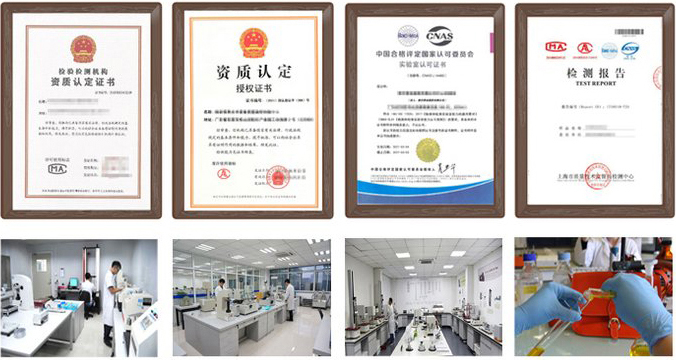Camellia tincture detectionHow to apply for a report? What items need to be tested? We will conduct testing and evaluation in strict accordance with the standards. We can also provide personalized testing plans and reports according to your needs.
The detection method of choline usually involves the comprehensive use of multiple analytical techniques and instruments to ensure the accuracy and reliability of the test results. The following are some common choline detection methods:
1. High-Performance Liquid Chromatography (HPLC)
High-Performance Liquid Chromatography is one of the commonly used methods for choline detection. This method has the advantages of high sensitivity, high resolution, and high reproducibility, and can accurately and quickly separate and detect choline and its related compounds.
Sample preparation: The choline sample to be tested is properly pretreated, such as dissolving, diluting, filtering, etc., to ensure that it is suitable for high-performance liquid chromatography analysis.
Chromatographic condition setting: Select the appropriate chromatographic column, mobile phase, flow rate, column temperature, and other parameters. Commonly used chromatographic columns include C18, C8, etc., and the mobile phase selects appropriate solvents according to the properties of choline, such as methanol, acetonitrile, etc. The flow rate and column temperature settings also need to be adjusted according to the specific situation.
Injection and detection: Inject the pretreated sample into the high-performance liquid chromatograph for separation and detection. By recording the chromatogram and the peak area or peak height, the content of the channel in the sample can be calculated.
2. Ultraviolet spectrophotometry
Ultraviolet spectrophotometry is also one of the commonly used methods for channel detection. This method uses the absorbance of the channel at a specific wavelength for quantitative determination.
Wavelength selection: According to the absorption spectrum characteristics of the channel, select a suitable detection wavelength.
Sample preparation: Dissolve the channel sample to be tested in an appropriate solvent and dilute it to an appropriate concentration.
Absorbance determination: Use an ultraviolet spectrophotometer to measure the absorbance of the sample at a selected wavelength. By comparing the absorbance of the sample with the standard, the content of the channel in the sample can be calculated.
3. Other methods
In addition to high-performance liquid chromatography and ultraviolet spectrophotometry, there are some other methods that can be used for the detection of channels, such as gas chromatography, electrochemical detection, etc. These methods have their own characteristics but may need to be selected and optimized according to the specific properties and detection requirements of chaebol.
4. Testing agency
For the testing of Camellia sinensis, you can choose a professional third-party testing agency. These agencies usually have advanced testing equipment and professional testing teams and can provide accurate and reliable test results. For example, institutions such as the Beijing Zhongke Optical Analysis Science and Technology Research Institute Inspection and Testing Center have the ability to test Camellia sinensis and can provide customized testing services according to customer needs.
5. Precautions
Sample processing: Ensure that no contamination and errors are introduced during sample processing to ensure the accuracy of the test results.
Instrument calibration: Regularly calibrate and maintain the testing instruments to ensure that their performance is stable and reliable.
Method validation: Before the formal test, the test method needs to be validated and optimized to ensure that it is suitable for the samples to be tested and the test requirements.
Data recording and processing: Record the data and results of the test process in detail, and perform appropriate processing and analysis to draw accurate conclusions.
In summary, there are many methods for testing Camellia sinensis, and the specific method to be selected depends on factors such as the nature of the sample to be tested, the test requirements, and the laboratory conditions. In practical applications, the method should be selected and optimized according to the specific situation.
Test report function
1、Project bidding: issue authoritative third-party CMA/CNAS qualification report;
2、E-commerce platform entry: quality inspection reports recognized by major e-commerce platforms;
3、Used as sales report: issuing a test report with legal effect to make consumers feel more at ease;
4、Papers and scientific research: providing professional and personalized testing needs;
5、Judicial services: providing scientific, fair and accurate testing data;
6、Industrial problem diagnosis: verifying the troubleshooting and correction of problems in industrial production;


 National free customer service telephone 400-101-7153
National free customer service telephone 400-101-7153 

